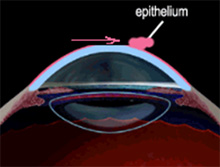Intacs (Intracornial Rings)
Intacs is a recent and revolutionary corneal ring prescription insert that is entirely reversible. Thus, patients who elect to have Intacs are not “locked in” to the procedure forever, as are patients who undergo other refractive procedures such as LASIK and PRK. Vision correction with Intacs entails implanting the micro-thin intracorneal rings into the cornea…
Read article




